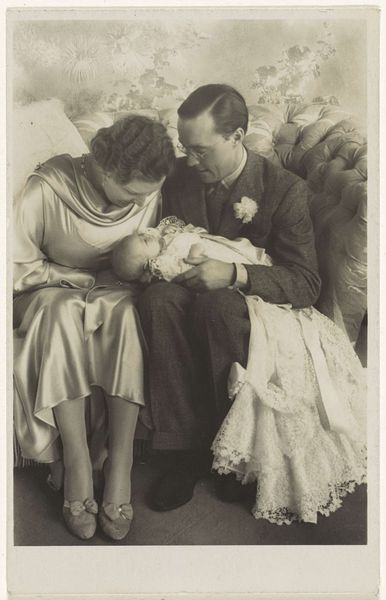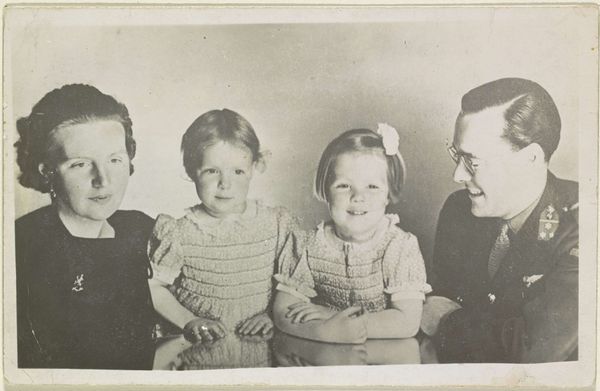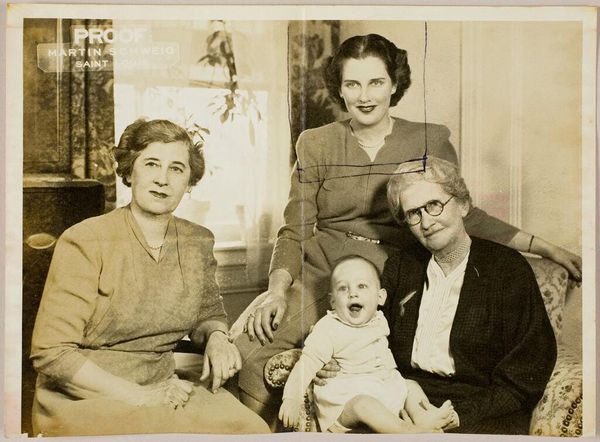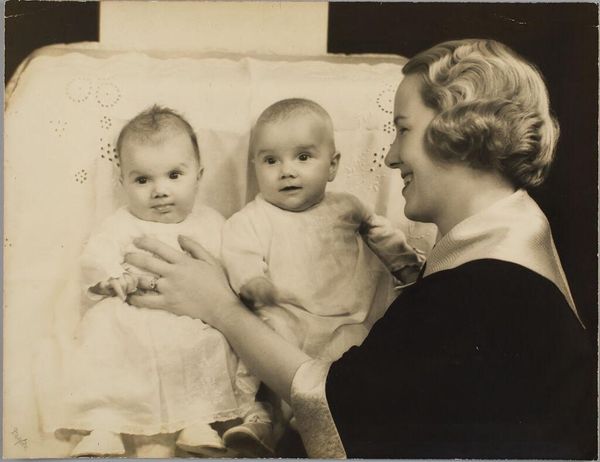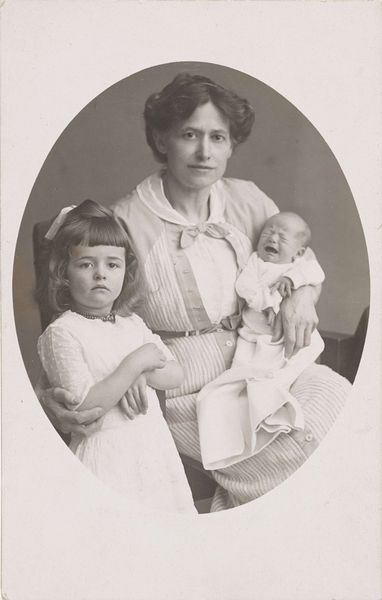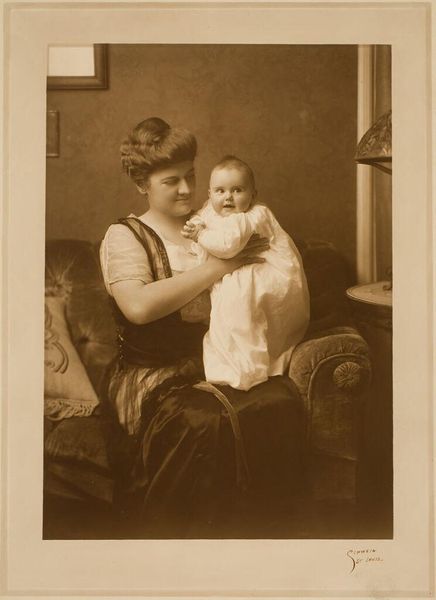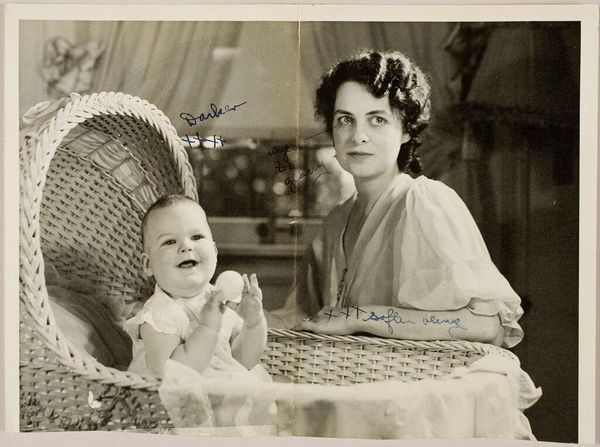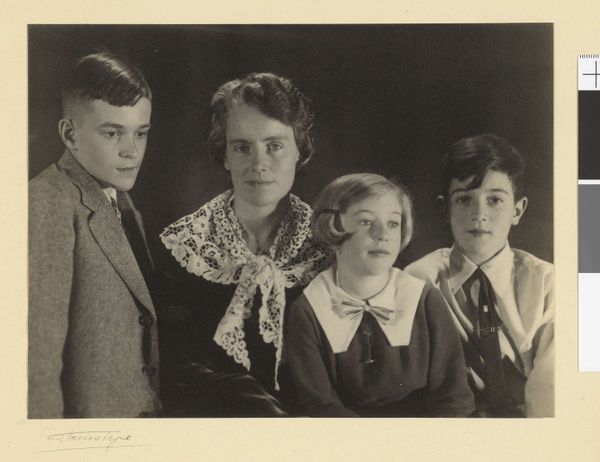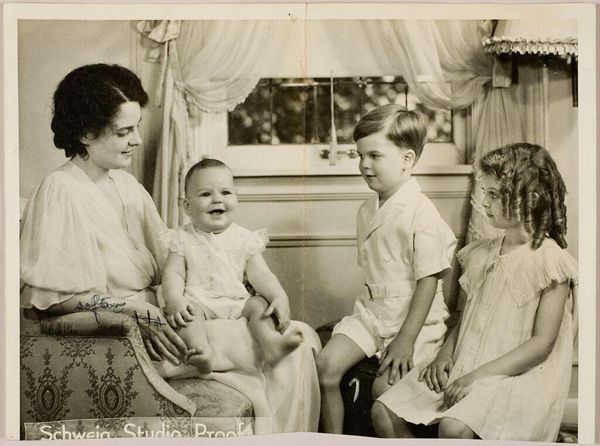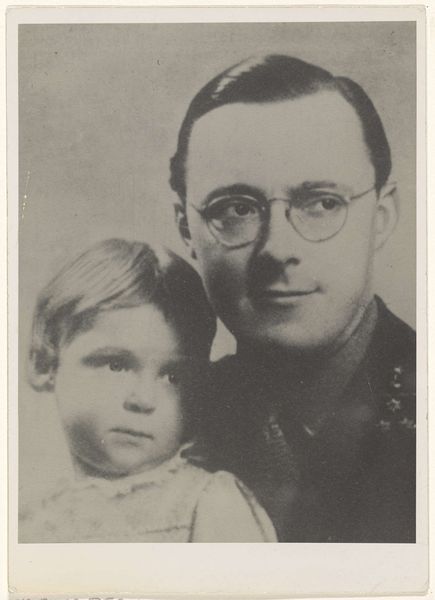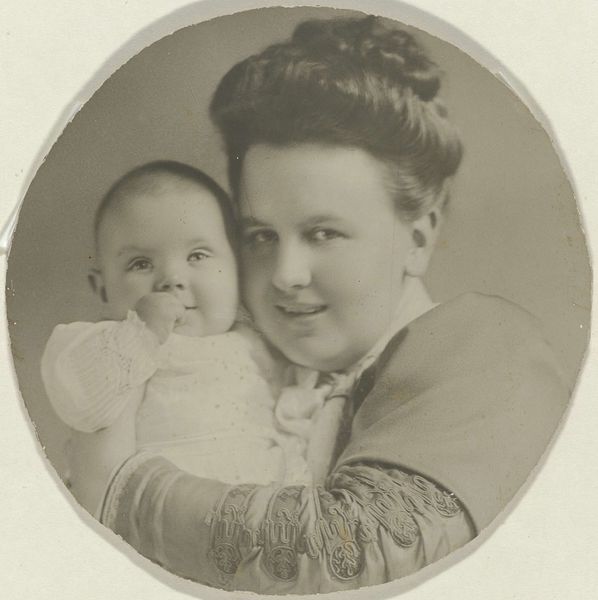
Portret van Juliana, koningin der Nederlanden, Bernhard van Lippe-Biesterfeld en Beatrix, koningin der Nederlanden Possibly 1938
0:00
0:00
franzziegler
Rijksmuseum
photography, gelatin-silver-print
#
portrait
#
personal snap photobooth
#
wedding photograph
#
wedding photography
#
archive photography
#
photography
#
historical photography
#
couple photography
#
gelatin-silver-print
#
modernism
Dimensions: height 94 mm, width 138 mm
Copyright: Rijks Museum: Open Domain
Curator: Welcome. Before us, we have a gelatin-silver print entitled "Portrait of Juliana, Queen of the Netherlands, Bernhard of Lippe-Biesterfeld, and Beatrix, Queen of the Netherlands," possibly created around 1938 by Franz Ziegler. It now resides here at the Rijksmuseum. Editor: My first impression? There is an undeniable tenderness here. The almost sepia tones evoke a powerful sense of nostalgia, imbuing the portrait with a warm, sentimental ambiance. The composition directs the gaze immediately towards the subjects and their clear bond of affection. Curator: Indeed. While the technical aspects are not revolutionary, this piece offers insights into the public's perception and construction of the Dutch Royal Family. Observe how it seemingly tries to normalize their image. Note also the calculated familial intimacy presented against a vague background. It is less about artistic innovation and more about the orchestration of a royal image. Editor: I see what you mean, though I think Ziegler did an effective job conveying that feeling. The way their faces are turned creates a sort of triangular compositional balance, emphasizing a strong familial dynamic. And even that choice to photograph in monochrome serves to further idealize the subject by obscuring blemishes and imperfections that would, in the current moment, reveal humanity rather than mask it. Curator: Interesting observation. But beyond just appearances, this portrait emerges in a critical period. The pre-war years called for reassurance, even a propagandistic need to fortify faith in leadership through conventional ideals: family, duty, lineage. Photography, as a fairly new technology at that point, provided a tool for immediacy and "realness" to project carefully chosen symbols. Editor: Right, I agree. This is no spontaneous family snapshot. Yet it has this feel. It makes it that much more fascinating when knowing the era’s expectations and how images were intentionally managed to address the society. Curator: A point well-taken. Looking closely at Ziegler's handling of photography and political environment in 1938, and assessing the structural aspects with personal touches and effects, opens paths to a more nuanced examination. Editor: I'll certainly leave with new layers of respect for a royal portrait that goes beyond face value.
Comments
No comments
Be the first to comment and join the conversation on the ultimate creative platform.
